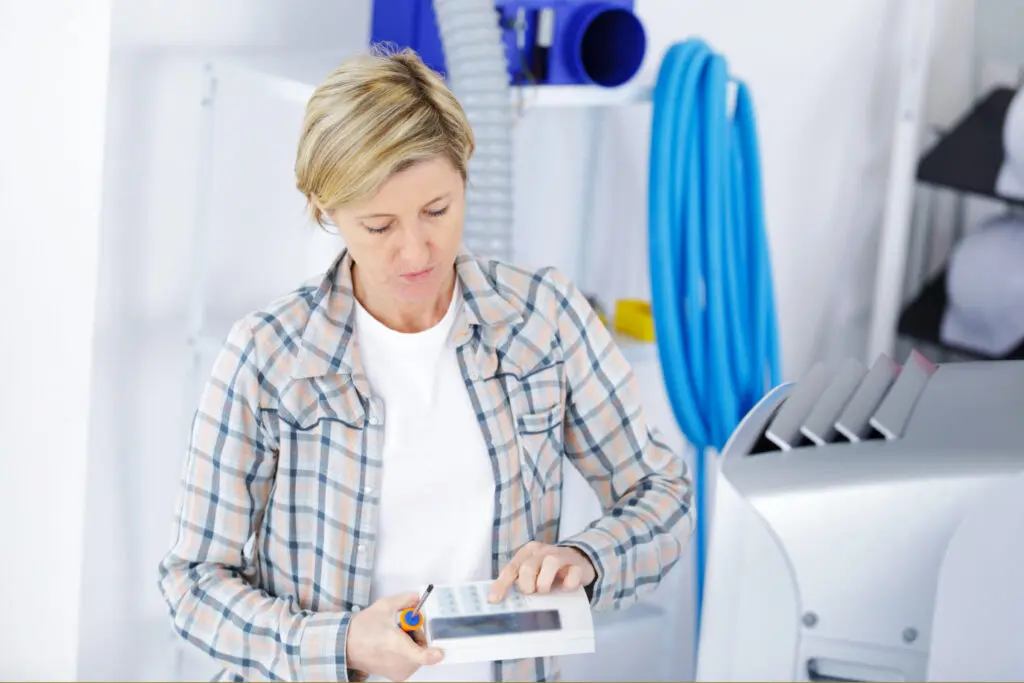While some things are best left to professionals, there’s plenty you can do to maintain your own HVAC system. Preventative maintenance is one of the best ways to get as many years out of it as possible. In fact, the Indoor Air Quality Association (IAQA) considers HVAC maintenance essential.
Why is HVAC maintenance important?
Beyond safety and health benefits, preventative maintenance for your HVAC system can save you money by extending its lifespan, preventing expensive breakdowns, and ensuring it runs efficiently.
Likewise, a properly maintained HVAC system improves in-home air quality and is better for the environment.
How much does HVAC maintenance cost?
Depending on where you live and who you call, HomeAdvisor suggests routine HVAC service may cost up to $200 for something as simple as an AC tune up. Maintenance for a boiler or furnace can be equally pricey, costing several hundred dollars.
While many HVAC companies offer service plans to help reduce these costs, home and property owners who are confident in their abilities can manage basic to intermediate maintenance on their own, saving thousands over the course of their system’s lifespan.
Of course, if you feel overwhelmed by the notion of HVAC system maintenance, do yourself a favor and call a pro. It’s better to pay someone who knows what they’re doing than deal with the fallout of a damaged system.
What do you do for HVAC maintenance?
Use this checklist to guide you through basic HVAC maintenance tasks you can do yourself.
Thermostat
When it comes to thermostats, consider three things: cleanliness, battery life, and functionality.
- Cleanliness is easy enough. Using a soft, slightly damp cloth, wipe away any dust and debris that may have accumulated on the thermostats in your home.
- Batteries are equally simple to replace. Swap out batteries in any units that may use one. If a unit uses a battery, it can typically be popped off the wall, but this may vary by model. Batteries may need replacement every one or two years.
- Testing both the heating and cooling functionality of each thermostat should only take a few minutes. To test heat, set the temperature higher than the current temperature displayed on the unit. Confirm the unit powered on. To test, cold, do the opposite, setting the temperature lower, making sure the AC starts shortly after the adjustment.
Outdoor Units
Any outdoor HVAC units, such as the condenser for your central air system, will need to be cleared of debris on, in, and around the unit. Make sure it’s completely unobstructed by plants and other nearby objects. You typically want a few feet of clearance around the unit.
You should also pay attention to whether the unit is level. If it’s not level, this could impact its functionality and lifespan. You may need to call in a professional to level the ground or slab on which the unit rests, depending on how bad the tilt is.
Finally, check that the condenser is functional. If you notice it’s not working, try these troubleshooting tips.
Indoor Units
For indoor units, things can be a bit more involved, meaning you may still want to call in a pro. However, there’s plenty you can do yourself.
Giving the unit a once over to ensure nothing looks out of the ordinary is a great start. Additionally, if your unit has a water line filter, you can likely change it yourself. Water purification filters should be replaced multiple times per year, at least once every six months.
Ducts & Ventilation
Make sure all vents in your home are clean and unobstructed. If any are particularly dirty, consider removing them to make them easier to clean (you may need a screwdriver to do this).
This is also a great opportunity to replace any air filters in your home. If you’re not sure what size to buy, check the dimensions printed on your current filter. Note that you can (and should) change filters more than once a year. Some renters and homeowners change air filters quarterly, or even once a month.
Did you know? Home warranties can cover ductwork!
How often should my HVAC system be maintained?
It’s best practice to practice routine HVAC system maintenance on an annual basis. However, certain parts of your system, such as air and water filters, may need to be replaced more frequently. As mentioned, this varies from system to system, but air filters may need replacement every one to three months, while water filters may require replacement once or twice per year.
If your AC system is getting up there in years, you might be thinking about a replacement. Look for these signs it’s time to replace your AC as you run your checks.
How else can I protect my HVAC system?
While routine maintenance will extend the life of your system, malfunctions can happen at any time, for any reason. For total peace of mind, look to a home warranty. Whether you have an older HVAC system or a brand-new unit, home warranties are a sound investment that can protect you against the sudden costs of HVAC system failures.
When something goes wrong with your HVAC system, there’s no need to take on all the costs yourself. Select Home Warranty can cover the costs of a professional repair. Start with a FREE quote today. Dial 800-670-8931 for more information and coverage options!

